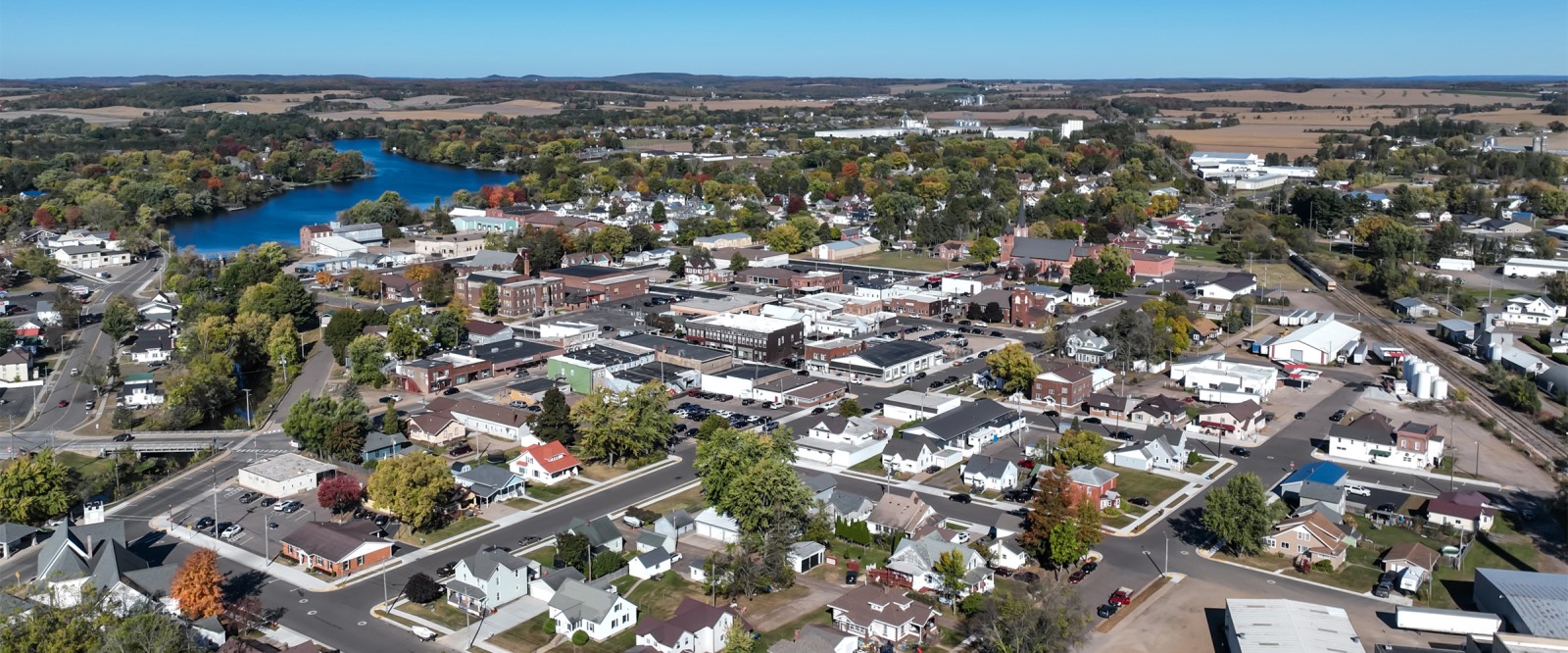Lead Pipe Replacement Project Transforms Bloomer's Water System

Written by: Tyler Hastings, PE; CBS Squared Inc.
![]()
In 2020, the City of Bloomer confronted a public health issue when lead was found in its drinking water, exceeding safe levels set by federal and state guidelines. The Wisconsin Department of Natural Resources (WDNR) gave Bloomer two options: Add chemical treatment for perpetuity or replace the lead-jointed water mains. The city chose the long term solution—replacing the lead pipes completely, initiating the largest infrastructure project in City history.
A Commitment to Public Health
Bloomer’s decision to replace the lead-jointed water mains was the foundation for a comprehensive, multi-phase infrastructure upgrade. Approximately 20% of Bloomer’s water mains, many decades old, were made with lead joints. These pipes, once considered durable, had become a significant health risk. The city’s goal was to modernize the entire water system, ensuring safer drinking water for residents.
Securing Critical Funding
Funding was a significant hurdle. To overcome this hurdle, the city secured $22.5 million in low interest loans and $5.2 million in grants, the largest grant ever awarded in the U.S. for a lead pipe removal project. This left Bloomer responsible for just $500,000 of the total cost.
Navigating Challenges and Introducing Innovation
The design phase encountered an unexpected challenge: supply chain disruptions caused by the COVID-19 pandemic, which made sourcing traditional ductile iron pipes difficult. The solution was to use PVC pipes instead, a material the city had not previously utilized. This also led to upgrades in equipment, including GPS-enabled systems to simplify future maintenance.
Broader Infrastructure Improvements
Beyond replacing the water mains, the project provided an opportunity to address other infrastructure needs, including stormwater drainage, street realignment, and sidewalk and utility upgrades. One significant improvement was enlarging a main outfall sewer pipe to mitigate flooding issues, particularly on high-traffic streets. Additionally, sediment sumps were installed in storm structures to protect local waterways, including Duncan Creek, from contamination.

About the Guest Blogger
Tyler Hastings is a civil engineer with 14 years of experience in project management and design, specializing in municipal engineering projects such as street, sewer, watermain, and stormwater systems. He excels in stormwater engineering, regulatory compliance, and guiding clients through funding opportunities. Tyler is dedicated to delivering successful projects and leading teams with clear communication and strategic planning. Connect with Tyler on LinkedIn! or visit the CBS Squared, Inc. website to see more of Tyler’s work.

